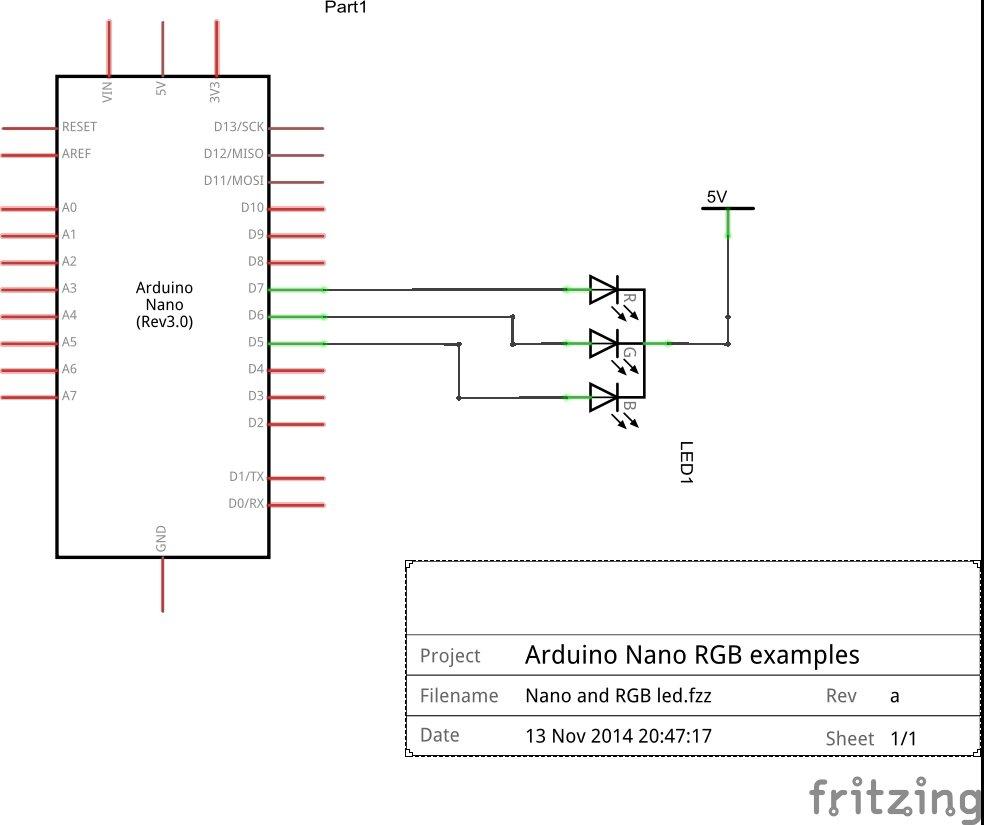
- #Arduino rgb led all colors how to
- #Arduino rgb led all colors code
- #Arduino rgb led all colors download
#Arduino rgb led all colors how to
In this circuit, you’ll learn how to use an RGB LED to create unique color combinations. (A quick video of Digital Example one and Digital Example 2)Īppendix 1: _RGBL_Digital. RGB, or red-green-blue, LEDs have three different color-emitting diodes that can be combined to create all sorts of colors.
#Arduino rgb led all colors code
Play around with the code to see how it works and make your own fun color functions.Upload this to your board and watch as your three LEDs change colour randomly.Un-comment (delete //) from in front of every line in the Example 2 section of the loop() code.Next comment out (add //) to the three lines of example 1.Actually, it consists of 3 separate LEDs red, green and blue packed together in a single case. RGB LED / int redPin 11 int greenPin 10 int bluePin 9 //uncomment this line if using a Common Anode LED //define COMMONANODE void setup. These colors being some of the standard Internet colors. To see how we control each LED look at the setColor() function. The RGB LED can emit any colors by mixing the 3 basic colors red, green and blue. The following test sketch will cycle through the colors red, green, blue, yellow, purple, and aqua.If you go to the loop() section of the code under example 1 you can see where you change the colors.These panels are normally used to make video walls here in New York we see them on the sides of buses and on bus stops to display animations or short video clips.

Bring a little bit of Times Square into your home with our RGB LED matrix panels. Figure out what PWM is, which pins support PWM, and how to re-wire your circuit and re-write your program to do what you want it to do. Enjoy as your three LEDs light up Red, Green, and Blue. Arduino Uno is limited to 32x16 pixels, single-buffered. To control how bright an LED is, you need to use the PWM pins and use analogWrite () which accepts a value between 0 to 255.Compile and upload the sketch to your Arduino board.Copy the code below and paste it into a an empty Arduino sketch.
#Arduino rgb led all colors download
But don't take our word for it download the code below and get playing. This requires 3 digital pins for each LED and allows for 7 colours to be displayed (Red, Green, Blue, Yellow, Cyan, Magenta, White). It is possible to control an RGB LED digitally. A great open source microcontroller platform (for more details visit ) EDGELEC 100pcs 5mm RGB Tri-Color (Red Green Blue Multicolor) 4Pin LED Diodes Common Cathode Diffused Round Lens 29mm Long Lead +300pcs Resistors (for DC 6-12V).This limits the current to ~20mA, well within most LEDs and microcontroller ratings. I'm using an Arduino Nano, and the silkscreen on it is also rather unreadable. Consult your LEDs datasheet for maximum ratings but we like to use 270 ohm resistors. Majenko 104k 5 76 134 Ah, analogWrite and analog pin caused the confusion Also, I find it rather weird that it doesn't cause (atleast) a warning.As most microcontrollers (including the Arduino) operate on 5 volts a current limiting resistor is required. Most LEDs are designed to work with a voltage between 1.5v and 3v.It is most commonly found in either a 5mm bulb size or as a 5mm pirahna form factor.Ĭurrent Limiting Resistors (270 ohm) (red-purple-brown) A common anode RGB LED is the most popular type.


Though, the LED's don't light up at all for low analogwrite values and the difference between the levels is not visible (to me). Currently I'm controlling an RGB LED with my Arduino Nano.


 0 kommentar(er)
0 kommentar(er)
